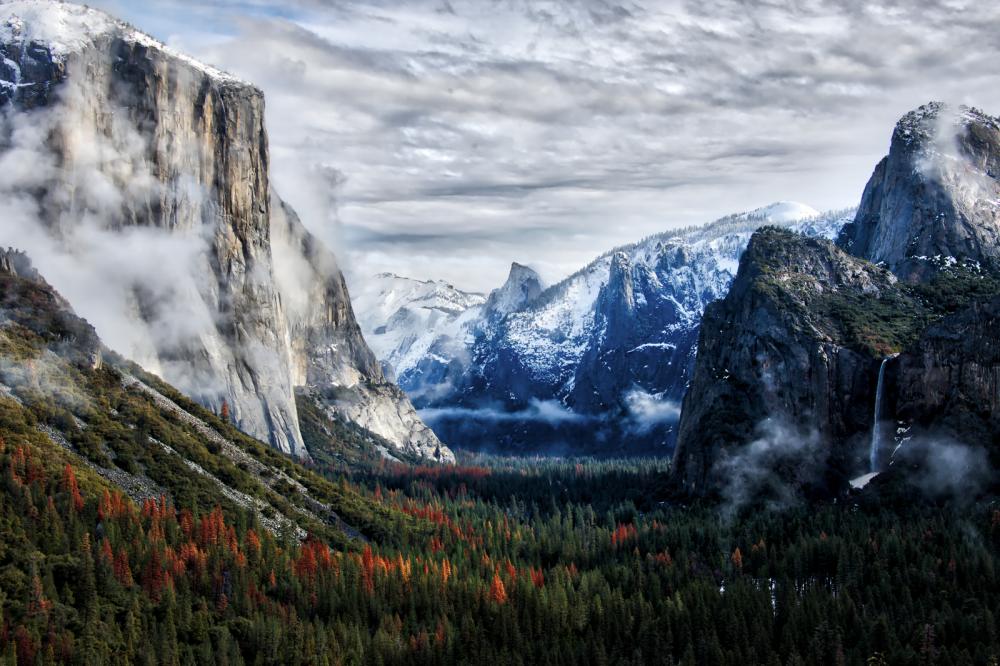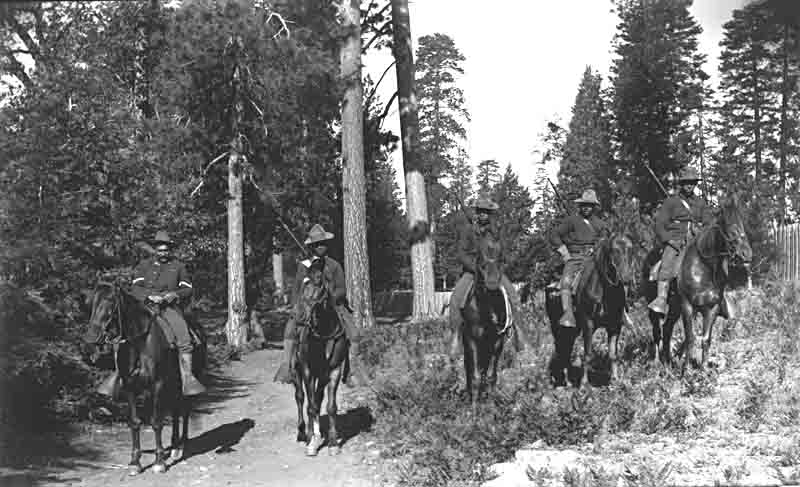Why we must teach the ugly side of public lands history + a tool to help

Yosemite National Park, California
Howard Ignatius, Flickr.
New curriculum includes a more complete retelling
While the conservation movement has many storied moments worth celebrating, the legacies we choose to focus on are far too often centered around the tales of white men “protecting” parks and public lands.
In fact the full history of national parks, forests and other public lands in the United States is interwoven with episodes of great cruelty and dispossession, often inflicted on the original and traditional inhabitants of what we call North America. And oftentimes the stories of people of color, such as the Buffalo Soldiers or Tie Sing, are left out completely.
To tell a more inclusive and complete story about U.S. public lands history, we must examine it from all angles—and we must have tools that help conservationists and educators do the same.
That’s why The Wilderness Society and the Avarna Group, working with Indigenous consultants Daisy Purdy, Honor Keeler, Dr. Rae Gould and Yufna Soldier Wolf, has published a teaching curriculum for helping educators, youth leaders and even government agencies share the full story of public lands.
The downloadable curriculum “Public Lands in the United States” includes five chapters, each with context-setting background, step by step lesson plans and materials for each activity—from printable images and “Wilderness Values” cue cards to timeline puzzles and research prompts about current diversity and access efforts and current threats to public lands. Although it’s geared especially for those working with high school-aged students, it’s been downloaded by university staff, nonprofits and agencies such as the National Parks Service and U.S. Forest Service.
But before we tell you more about the curriculum and how some of our partners are using it, reflect with us on some of the dark moments it teaches about and why it’s important not to omit them from public lands history.
The story of genocide at Yosemite National Park
When the conservation community talks about the first major federal actions to preserve land in the United States, we often cite the Yosemite Grant: Abraham Lincoln’s 1864 decision to cede Yosemite Valley and Mariposa Grove to the state of California for use as a public park. Lincoln’s decision set the precedent of the U.S. government setting aside land for the purpose of preservation that led to the establishment of the first national park, Yellowstone. What is often overlooked when celebrating this event is the violent, forced dispossession in Yosemite Valley carried out by a California state militia force known as the Mariposa Battalion fewer than two decades earlier. In 1851, the unit attacked the villages of the Indigenous Ahwahneechee people living in the valley, burning their homes and food supplies to force them off the land. After the attack, the. U.S. allowed a few surviving Ahwahneechee to stay on the land, but only if they agreed to serve as a “cultural attraction” and weave baskets for visiting tourists.
Yosemite National Park’s name is actually derived from an Ahwahneechee word shouted by villagers as militia forces attacked and drove them off the land.
Ironically, the word that eventually became the name of the national park is derived from an Ahwahneechee word shouted by the villagers during the Battalion’s attack. Battalion soldiers thought the word “Yosemeatea”" was a place name, but it was actually the Ahwahneechee word for “killers.” Thus, Yosemite National Park is actually named for the act of genocide committed by European-Americans a few years before the valley was federally designated as a state park.
While shocking, this example is not unique to Yosemite. It is emblematic of the fact that the history of parks, forests and other public lands in the U.S. is interwoven with episodes of great cruelty, often inflicted on the original and traditional inhabitants of what we call North America. It reminds us that the legacy of the conservation movement is complex and often dishonorable.
Omission of people of color
Furthermore, no history of public lands is complete without the stories of people of color, but how often are those stories told? For example, how many people learn about the Buffalo Soldiers, an all-black Army regiment that served as the first park rangers patrolling Yosemite by horse and bicycle? The story of Yosemite is incomplete without them.

Buffalo Soldiers at Yosemite National Park, NPS
Likewise, the story of how the Southwest became part of the U.S. is incomplete if it does not include the dispossession of Latinx landowners after the Mexican American War. Some of the lands taken after the Treaty of Guadalupe Hidalgo became a part of America’s public lands system, but we tend to gloss over that, or ignore it entirely, when extolling the beauty of these “shared” open spaces.
To form an inclusive picture of U.S. public lands history, we must examine its many different layers and deal honestly with its darker chapters–and we must have tools that help conservationists and educators alike tell this more complete story.
A living curriculum about public lands
Our curriculum tries to tell a more inclusive story about public lands and the relationship of people to those lands.
In reflecting on our own history in the public lands movement and the stories we’ve traditionally told as an organization and conservation movement, we knew this curriculum needed to be versatile and usable in all the diverse settings we learn about public lands.
While we developed the curriculum for learners high school age and above, we made sure it can be adapted for younger students, too. For example, our partners at Cottonwood Gulch Expeditions in Albuquerque are using it to teach a diverse population of 8th graders about public lands while navigating the complex history of how these places came to be protected. Cottonwood Gulch Expeditions are even starting to use the curriculum as a professional development tool for their staff.
An important feature of the curriculum is that it can be used in the field. The Appalachian Mountain Club in Boston partnered with us to develop a two-week course for teens to explore the curriculum while backpacking, canoeing and learning to be leaders and advocates. Additionally, they’ve made parts of the curriculum an integral piece of their Outdoor Leadership Trainings to help better prepare their adult educators to lead young people from a place of equity and truth.
The curriculum is part of The Wilderness Society’s broader effort to be more inclusive and equitable in our advocacy for the protection of public lands. Just as our growth around equity and justice as an organization is an ongoing journey, the curriculum too is ever evolving.
We regard our public lands curriculum as a living document, one that will be revised and updated regularly based on user feedback. It is available for use free of charge and we invite you to provide your feedback using the email address on the registration page.
Once we understand public lands and their history, we can pay that knowledge forward into creating a conservation culture and policies that are equitable and inclusive of everyone. With shared understanding, shared lands have the power to connect us as individuals and as communities, now and for generations to come.
